Martello Towers in Ireland
There were about 50 Martello Towers built in Ireland. 
Since people thought that Napoleon might firstly try to take over Ireland, in 1804 the first tower forts appeared here. Most of them were built on the coast line and around the area of Dublin, including the island ‘Ireland’s Eye’ and ‘Lambey Island’. The British built about fifty Martello towers around the Irish coastline, especially along the east coast, from Millmount (Drogheda), to Bray, around Dublin Bay but also around Cork Harbour on the south coast. On the east coast, concentrated mainly around Dublin Bay, twenty-six towers were in line of sight of each other, providing the ability to communicate with one another, or warn of any incoming attacks.

The North Dublin towers are numbered one to twelve starting at Red Rock Sutton Creek on the Dublin side of the Howth peninsula. All twelve towers constructed remain standing but only the tower at Howth harbour is open for viewing. Seven towers are privately owned and 2 towers are located on offshore islands, Irelands Eye off Howth and Shenick Island off Skerries.
Only four of the seven towers in private ownership are occupied (Sutton, Portmarnock, Malahide, Portrane). Balbriggan, Shenick Island, Drumanagh, Howth Harbour Towers are under the jurisdiction of the Fingal County Council. The tower at Balbriggan is in a very poor condition with the entire top of the tower is missing. The Howth tower is the only North Dublin tower that was restored by Fingal County Council, it is open to the public.
A Martello tower was built at Millmount on the south bank of the River Boyne at Drogheda in 1808, but the mound is said to be over 3,000 years old. Stories claim it was originally a passage grave before a fort was built over the site, and Legends claim it is the burial place of Amergin, a famous early Celtic poet and Queen Scotia, the daughter of an Egyptian Pharaoh.
During the Irish Civil War in 1922, it was bombarded by Irish Free State soldiers and was later restored by the Drogheda Corporation and opened to the public in the year 2000.
Hugh de Lacy, an Anglo-Norman, built a motte and bailey castle there in the 12th century, and many years later it was replaced by a fortified castle (Which helped in the resistance put up against Oliver Cromwell when he invaded the town in 1649).
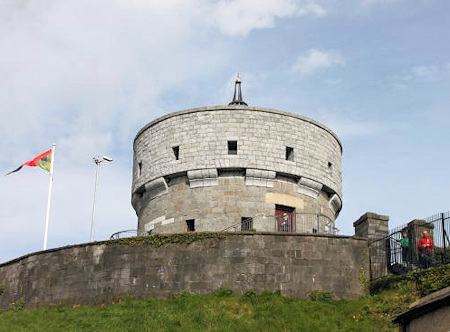
Millmount Fort Today
The Martello Tower is at the summit of the fortifications and Millmount Museum, which won an International Gulbenkian Museum Award, is open all year round and admission includes access to the tower, providing a beautiful view of the expansive modern Irish town.
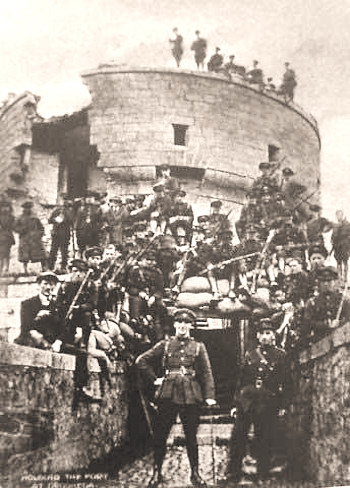
Millmount Tower after the attack in 1922 by Irish free state forces


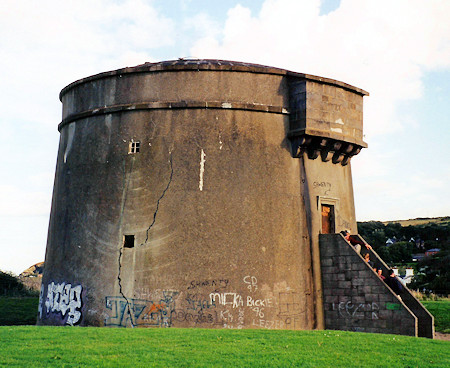

The first Martello tower North of Dublin is located at Red Rock, Sutton on the Dublin side of the Howth Peninsula and is now used as self catering accommodation.
Sutton Martello Tower was built on a rocky promontory using the local quartzite rock (which is why its called red rock). It was built in one of the most important areas of the creek and overlooks a large area of the bay.
At the end of the Napoleonic wars, the Sutton tower was the last tower in the Dublin area to be disarmed around 1881 after the threat posed by invasion passed
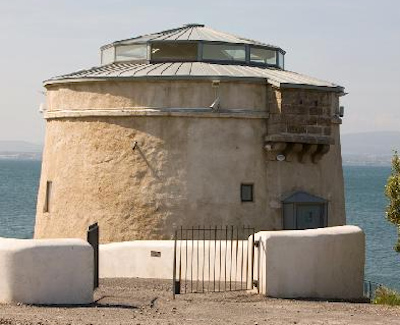
There are two entrances into the tower. The main entrance is by a stairway leading up to the main door. This doorway leads into an entrance hall, from there into the main living area.
Accommodation consists of three levels: two bedrooms and bathroom on the lower level; living area and balcony overlooking the bay on the middle level; and a modern kitchen/dining room offering breathtaking 360° views from roof level.


Three Martello Towers were built in 1804/05 on the east coast of Ireland at Bray, about 10 miles south of Dublin. Only one of the Martello towers still exists today.
Tower No. 1 was built on a sandbank opposite the Esplanade Hotel. It was badly damaged in a storm in 1878, collapsed and destroyed in 1884.
Tower No. 2, pictured right, is still standing on the southern side of the harbour at the railway bridge, very close to the railway station. The building is constructed in coursed granite. The circular tower comprises of a high battered granite wall with small plain defensive openings. It is now surmounted by a glazed "drum" with a glazed conical roof.
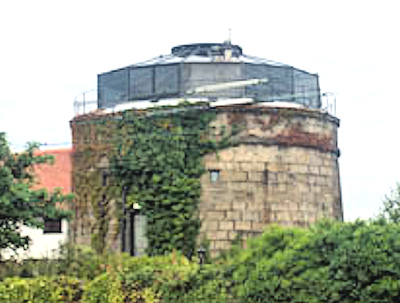
Tower No.2 (Ack.4)
The tower overlooks the shoreline and site on a bailey-like artificial mound which is contained by a battered stone wall. It has been converted into a residential property and is privately owned. It is currently unoccupied, having once been occupied by Bono from U2 in the 1980s.
Tower No. 3 was situated on the coastline at the rear of Ravenswell Convent. It was built on top of soft rock and collapsed into the sea in c1870s.

The Martello Tower is an original feature of the island dating from 1805. Built on the island’s southern shores, it has been restored by the Office of Public Works now set in landscaped gardens.

The Garnish tower, like others in Cork, but unlike other Irish Martello towers, has a straight cylindrical shape that does not splay out at its base.
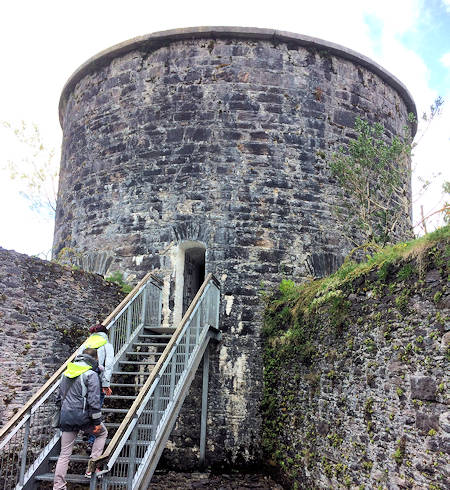






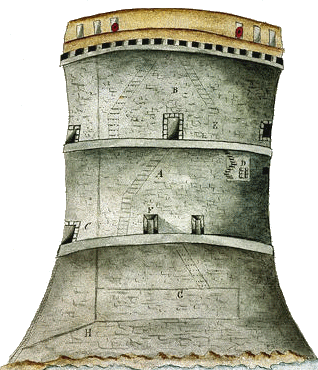

 Red Dragon I.T. Ltd.
Red Dragon I.T. Ltd.